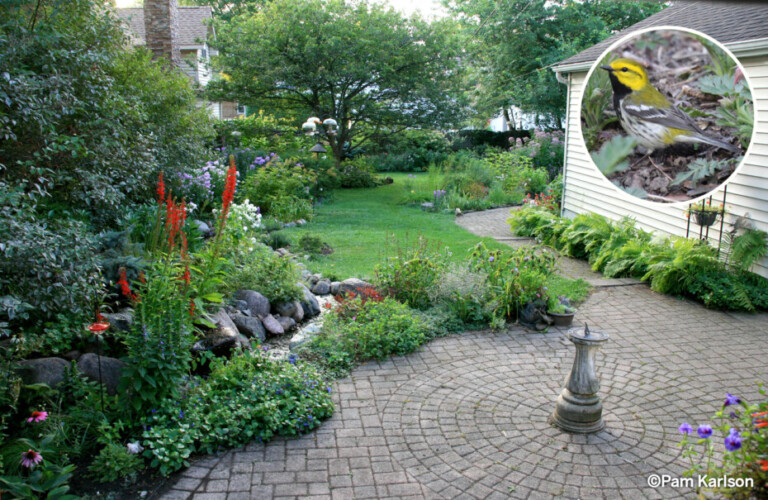
So like many organizations suddenly faced with reduced or nonexistent in-person programs in March of 2020, we turned to virtual platforms to reach our audience.
PAM KARLSON CHICAGO FREE
Paid subscribers get a free ticket to the virtual premiere of “Monty and Rose 2” later this year.The bread and butter of COS for many years has been in-person programs. Click below to become a paid subscriber today, and join a community where telling stories of birds and making films like “Monty and Rose” and “Dodger” is possible. This Week in Birding provides original posts direct to your inbox each Monday and Friday.

….I’ll be showing “Monty and Rose” on Tuesday night with the Black River Audubon Society in my home state of Ohio….I had a Common Grackle calling and flying around my neighborhood yesterday morning. It’s worth a read, especially if you have been an admirer of Audubon….The Chicago Park District has allocated $1.5 million in TIF funds to build a 3-mile trail as well as camping platforms at Big Marsh Park, a top birding site on the South Side….Thursday’s installment of Birds & Bytes with Chicago Ornithological Society will feature Pam Karlson and the fabulous bird garden she’s created in her Chicago back yard. Drew Lanham wrote an amazing piece for Audubon Magazine about John James Audubon and what to do about his racist legacy. Here is a video clip by Mitchell Wenkus featuring the Brant in Chicago, and other wintering waterfowl…. Two weeks ago, I wrote about the Brant that made its way from Wisconsin and Illinois to Indiana. It’s managing a number of different fish populations for a number of different needs, commercial, recreational and conservation and managing it for different purposes.” “Lake Michigan is never going to return to a natural state. “That’s kind of cool,” Höök says of the native species. Meanwhile, though, gulls and diving ducks are finding what they need in the lake. Lake trout, cisco, grayling and sturgeon are on the comeback. Several native lake species’ populations are increasing, in part due to re-stocking. Höök’s outlook for the lake is more sanguine than I suspected.

The Sea Grant program, a cooperative among NOAA (National Oceanic and Atmospheric Administration), Purdue University and the University of Illinois, uses research, outreach, and education to bring the latest science to Great Lakes communities and their residents. That has all sorts of impacts, including on the growth of Cladophora algae, another detriment to the ecosystem, and the source of avian botulism. The bivalves have filtered out zooplankton and increased water clarity. ” One of the more obvious changes in Lake Michigan (actually Lake Michigan-Huron, which is one very large lake connected at the Straits of Mackinac) in the last four decades is the introduction of zebra and quagga mussels. When I began focusing on environmental work full-time in 2018, one of the first books I read was Dan Egan’s landmark “ Death and Life of the Great Lakes. There’s some thought that there’s a preference for soft ray fishes, with soft fin rays, unlike the perch. “We know from studies that birds tend to like alewife and goby. “The species that people tend to care about from a recreational fishery perspective are salmon and yellow perch,” Höök says. The native gulls and waterfowl tend to prey on the invasive species, interestingly enough. Höök told me that some open-water fish will move into harbors during winter, which may make them more vulnerable. Here’s a recent video showing the scene in Jackson Harbor: Later in the year, we’ll see Double-crested Cormorants and Caspian Terns making the most of Lake Michigan’s fish stock. There Great Black-backed Gulls, Iceland Gulls and Herring Gulls stood on the edge of the ice, plucking fish from the water along Lake Shore Drive. That was the case about a week ago at Chicago’s Jackson Harbor on the South Side. In a cold February like this year’s, waterfowl and gulls congregate around the few patches of open water.

Gulls are right there with the ducks and geese, too. There’s really no commercial fishing in Illinois and Indiana at all any more.”Īt this time of year one of the more apparent birding phenomena is the massive groups of wintering waterfowl on the Chicago lakefront. “It used to be that it almost all was commercial fishing for lake species,” says Tomas Höök, Director of Illinois Indiana Sea Grant and Professor in Purdue’s Department of Forestry and Natural Resources, “and that has changed dramatically to where with salmon stocking it is almost all toward recreational fishing. Those ecological changes have impacts on people and wildlife alike.

Invasive species from sea lamprey to alewives to zebra and quagga mussels have altered the lake in innumerable ways. Lake Michigan is a fishery that’s….been through some stuff. Photo courtesy Illinois Indiana Sea Grant.


 0 kommentar(er)
0 kommentar(er)
